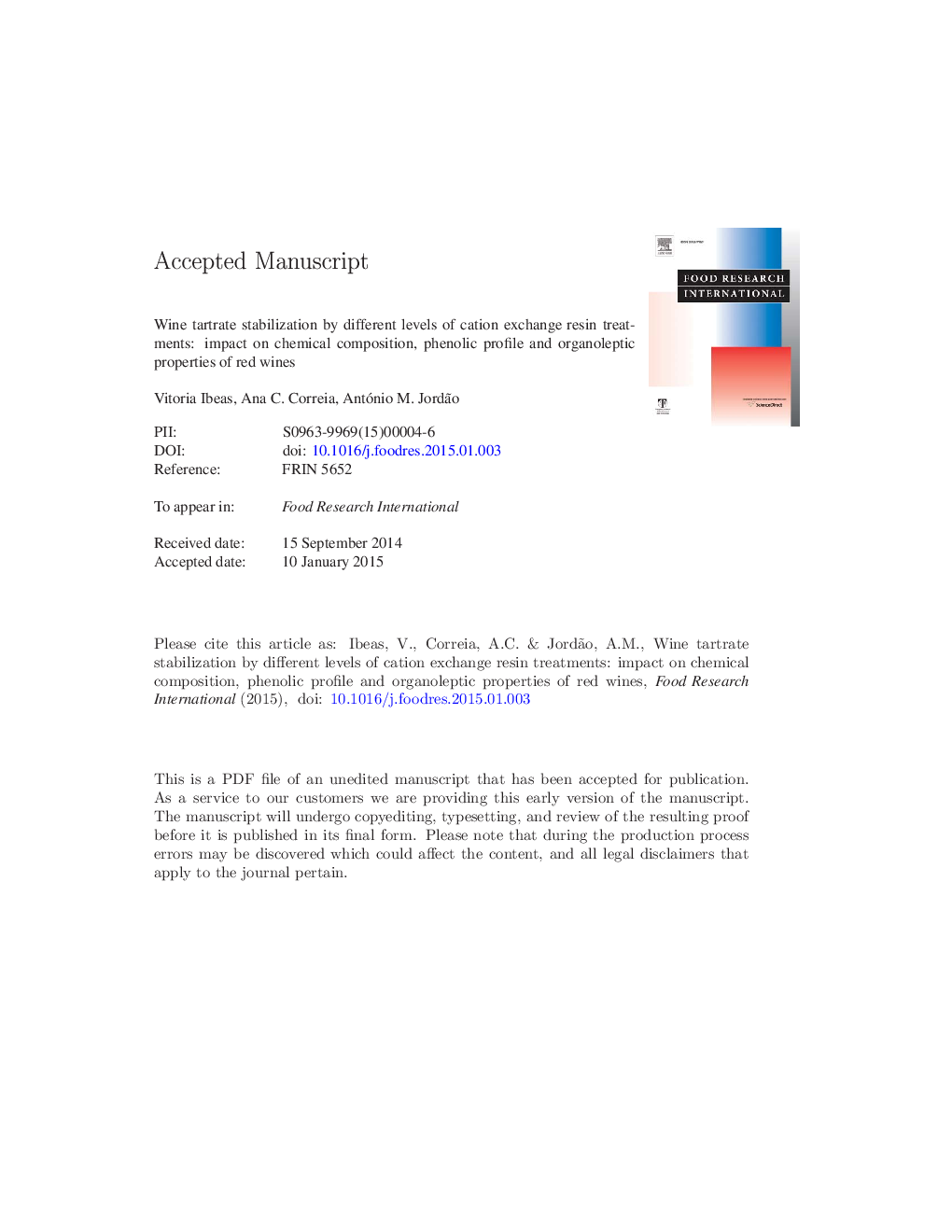| Article ID | Journal | Published Year | Pages | File Type |
|---|---|---|---|---|
| 6395650 | Food Research International | 2015 | 37 Pages |
Abstract
The aim of this work was to evaluate the impact of cation exchange resin, on tartrate stabilization, chemical composition, general phenolic composition, individual anthocyanin and different proanthocyanidin fraction content of a red wine made from a mixture of three Portuguese red grape varieties. Additionally, the influence of this tartrate stabilization process on organolpetic properties was another aim of this work. The cation exchanged red wines were mixed in different proportions with the untreated red wine. The results showed that the application of a cation exchange resin used was useful to adjust the pH and total acidity and revealed a good capacity to retain potassium and calcium. In addition, the cation exchange resin treatment caused a significant decrease in the contents of individual anthocyanins well as in the different fractions of proanthocyanidins (especially in monomeric fraction). Finally, considering the organoleptic properties, the most highly evaluated wine, especially considering taste parameters, was the control wine. These results confirm that cation exchange is an interesting in red winemaking to improve tartaric stability, but at same time it is important analyze potential effects on phenolic content and organoleptic properties of red wines.
Related Topics
Life Sciences
Agricultural and Biological Sciences
Food Science
Authors
Vitoria Ibeas, Ana C. Correia, António M. Jordão,
